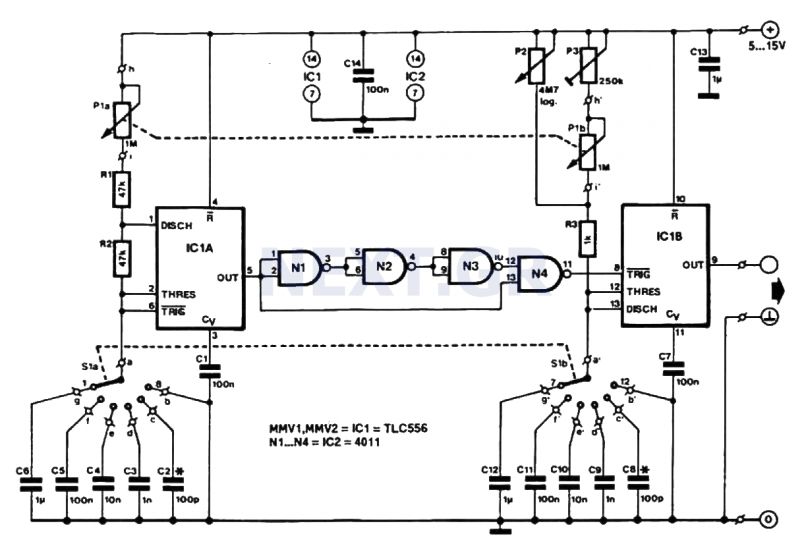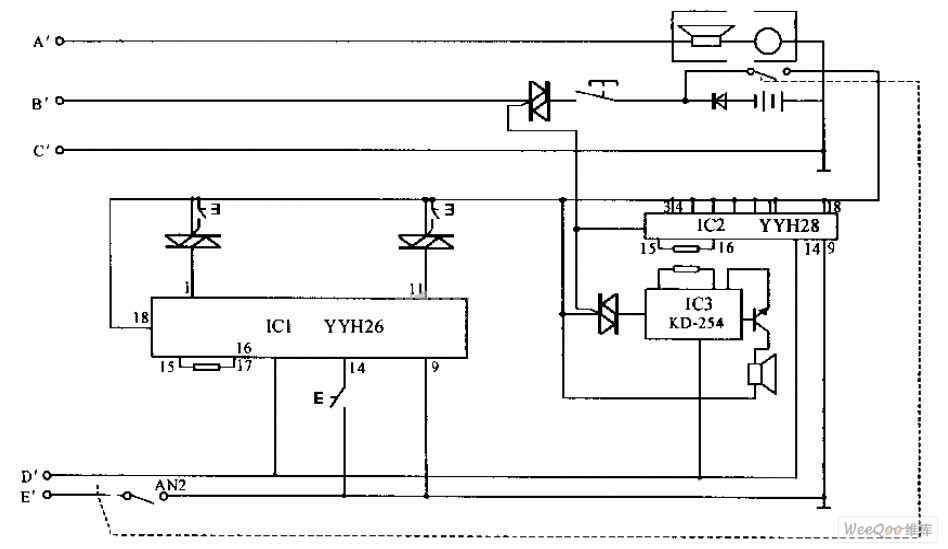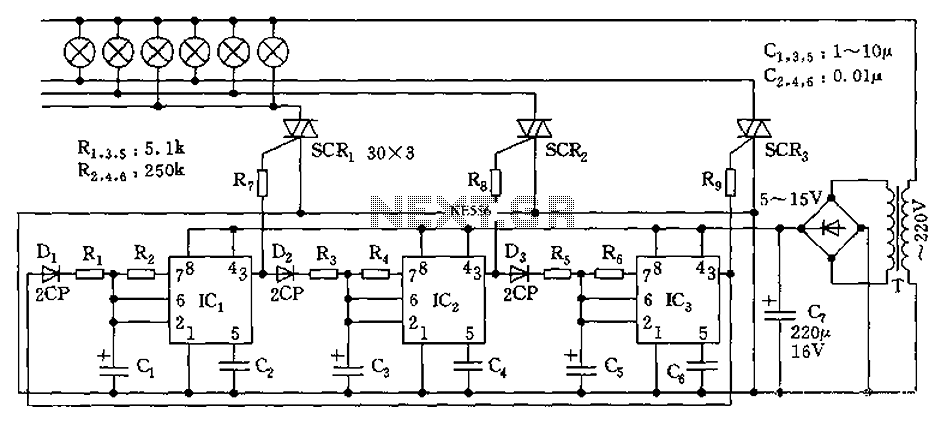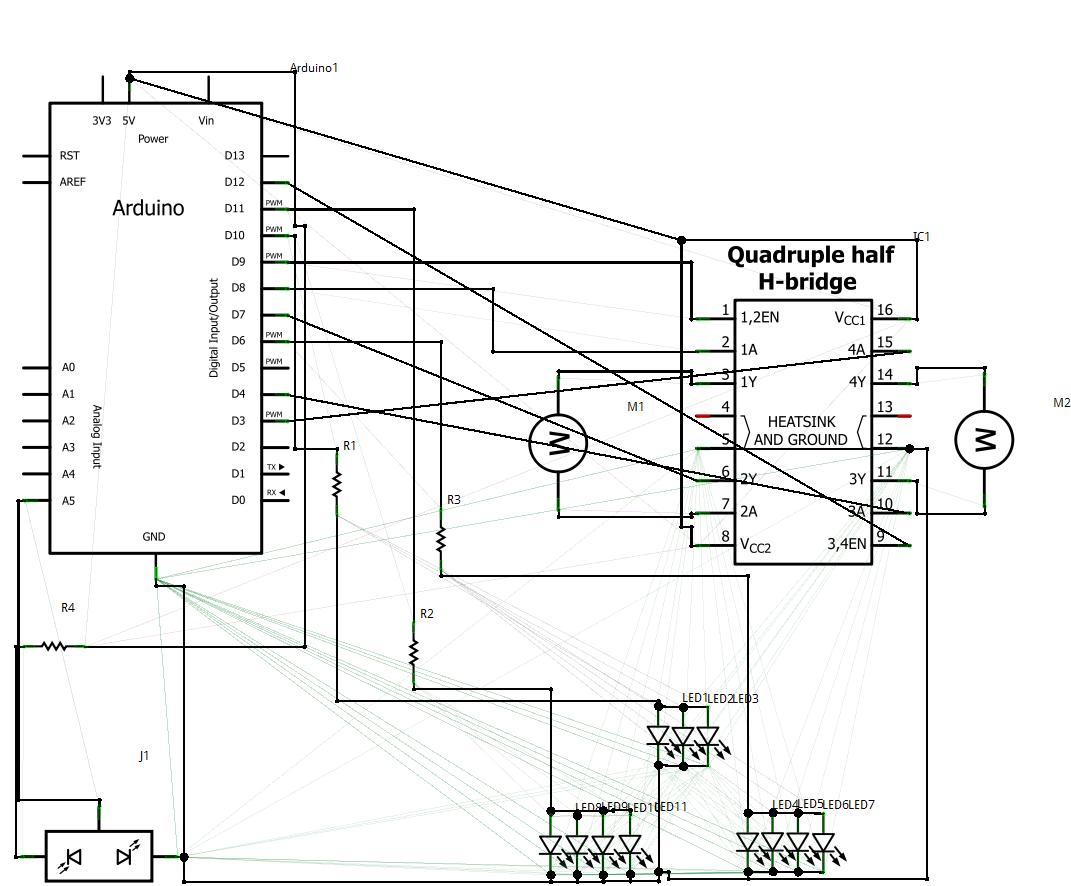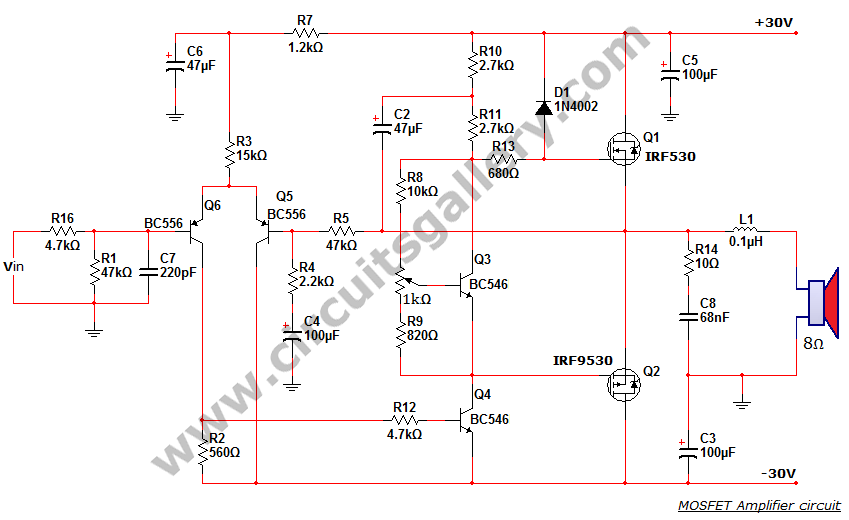
Ambulance sirens circuit

This circuit generates a sound similar to that of ambulance sirens. It differs from typical ambulance siren circuits in its design.
The circuit utilizes a combination of oscillators and amplifiers to produce a sound that mimics the varying pitch and frequency associated with ambulance sirens. The primary component responsible for generating the sound is a 555 timer IC configured in astable mode, which creates a square wave output. This output can be adjusted by varying the resistors and capacitors connected to the timer, allowing for customization of the frequency and duty cycle of the sound produced.
To enhance the siren effect, a second oscillator may be employed, often using another 555 timer or a similar oscillator circuit. This secondary oscillator can be set to a different frequency, allowing for a dual-tone output that more closely resembles the sound of an actual ambulance siren. The outputs of both oscillators are then mixed together using a simple resistor network before being fed into a power amplifier, which drives a speaker or piezo buzzer.
Power supply considerations for the circuit typically involve using a 9V battery or a similar DC source, providing adequate voltage for the 555 timer and the amplifier. Additionally, decoupling capacitors should be placed near the power pins of the ICs to prevent noise and ensure stable operation.
The final output can be further refined by incorporating a low-pass filter to smooth the waveform and reduce any harshness in the sound, creating a more realistic siren effect. The entire circuit can be assembled on a breadboard for prototyping, or designed into a PCB for a more permanent solution.This circuit is a circuit that sounds a siren-like sound of ambulance sirens. This circuit is different to an ambulance siren circuit generally, is to use.. 🔗 External reference
The circuit utilizes a combination of oscillators and amplifiers to produce a sound that mimics the varying pitch and frequency associated with ambulance sirens. The primary component responsible for generating the sound is a 555 timer IC configured in astable mode, which creates a square wave output. This output can be adjusted by varying the resistors and capacitors connected to the timer, allowing for customization of the frequency and duty cycle of the sound produced.
To enhance the siren effect, a second oscillator may be employed, often using another 555 timer or a similar oscillator circuit. This secondary oscillator can be set to a different frequency, allowing for a dual-tone output that more closely resembles the sound of an actual ambulance siren. The outputs of both oscillators are then mixed together using a simple resistor network before being fed into a power amplifier, which drives a speaker or piezo buzzer.
Power supply considerations for the circuit typically involve using a 9V battery or a similar DC source, providing adequate voltage for the 555 timer and the amplifier. Additionally, decoupling capacitors should be placed near the power pins of the ICs to prevent noise and ensure stable operation.
The final output can be further refined by incorporating a low-pass filter to smooth the waveform and reduce any harshness in the sound, creating a more realistic siren effect. The entire circuit can be assembled on a breadboard for prototyping, or designed into a PCB for a more permanent solution.This circuit is a circuit that sounds a siren-like sound of ambulance sirens. This circuit is different to an ambulance siren circuit generally, is to use.. 🔗 External reference
